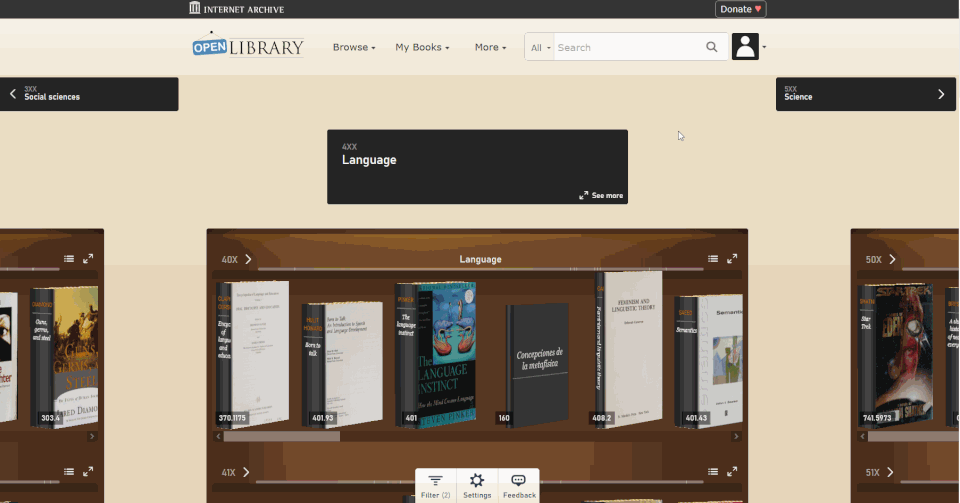


Enter the Open Library Explorer, Cami’s new experiment for browsing more than 4 million books in the Internet Archive’s Open Library. Still in beta, Open Library Explorer is able to harness the Dewey Decimal or Library of Congress classification systems to recreate virtually the experience of browsing the bookshelves at a physical library. Open Library Explorer enables readers to scan bookshelves left to right by subject, up and down for subclassifications. Switch a filter and suddenly the bookshelves are full of juvenile books. Type in “subject: biography” and you see nothing but biographies arranged by subject matter.
Why recreate a physical library experience in your browser?
Now that classrooms and libraries are once again shuttered, families are turning online for their educational and entertainment needs. With demand for digital books at an all-time high, the Open Library team was inspired to give readers something closer to what they enjoy in the physical world. Something that puts the power of discovery back into the hands of patrons.
Escaping the Algorithmic Bubble
One problem with online platforms is the way they guide you to new content. For music, movies, or books, Spotify, Netflix and Amazon use complicated recommendation algorithms to suggest what you should encounter next. But those algorithms are driven by the media you have already consumed. They put you into a “filter bubble” where you only see books similar to those you’ve already read. Cami and his team devised the Open Library Explorer as an alternative to recommendation engines. With the Open Library Explorer, you are free to dive deeper and deeper into the stacks. Where you go is driven by you, not by an algorithm..
Zoom out to get an ever expanding view of your library
Change the setting to make your books 3D, so you can see just how thick each volume is.
Cool New Features
By clicking on the Settings gear, you can customize the look and feel of your shelves. Hit the 3D options and you can pick out the 600-page books immediately, just by the thickness of the spine. When a title catches your eye, click on the book to see whether Open Library has an edition you can preview or borrow. For more than 4 million books, borrowing a copy in your browser is just a few clicks away.
Ready to enter the library? Click here, and be sure to share feedback so the Open Library team can make it even better.
What is Open Library?
Our goal is to provide a page on the web for every book ever published.
At its heart, Open Library is a catalog. The project began in November 2007 and has been inhaling catalog records from some of the biggest libraries in the world ever since. We have well over 20 million edition records online, provide access to 1.7 million scanned versions of books, and link to external sources like WorldCat and Amazon when we can. The secondary goal is to get you as close to the actual document you're looking for as we can, whether that is a scanned version courtesy of the Internet Archive, or a link to Powell's where you can purchase your own copy.
Books and editions on contemporary art
The MagicBook explores seamless transition between reality and virtual reality. When users look at the pages of a real book through a hand held display they can see virtual content superimposed over the real pages.
Helps to promote and diffuse contemporary art
A community for exchanging used books
Literature community
Intersection between art technology